|
The Royal Observer Corps'
D Day Seaborne Operations.
Helping to identify
approaching aircraft as "friend or foe" on board the invasion fleet.
Background
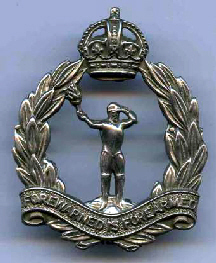 The Royal
Observer Corps
(ROC) provided reliable, early identification of approaching hostile ships and planes
for gunners with the aim of inflicting the maximum damage and destruction on the
enemy, while reducing incidents of Allied losses to so called
'friendly fire'. In essence, their skill was in the early identification of
friend from foe. The Royal
Observer Corps
(ROC) provided reliable, early identification of approaching hostile ships and planes
for gunners with the aim of inflicting the maximum damage and destruction on the
enemy, while reducing incidents of Allied losses to so called
'friendly fire'. In essence, their skill was in the early identification of
friend from foe.
[Patch and cap badge part of the Phil Scott
collection, Dorset].
The 796 civilian volunteers from the ROC, who
participated in the D-Day landings on board ships and craft, were a reassuring
presence. They were not part of the Combined
Operations Command but
their rather strange uniforms comprised aspects of all three services. They were fully
integrated into Operation Neptune through temporary enlistment into the Royal
Navy.
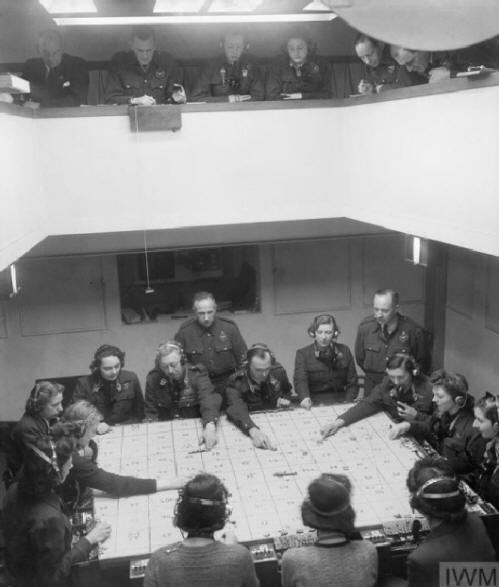
'Friendly fire' is a
euphemism for Allied attacks on Allied resources, due to
failure in correctly identifying friend from foe. Damage and losses incurred in
this way put an additional strain on already stretched resources, so pilots and planes saved through the ROC's improved
identification were of immeasurable value to the war effort.
From lesser
conflicts of the 19th century to the start of large-scale modern mechanised warfare in the 20th century,
accurate identification of enemy ships, planes, vehicles, flags,
banners and uniforms was of
paramount importance.
[Photo; General view of personnel at work in an ROC Centre.
© IWM (CH 11758)].
In earlier conflicts many
servicemen honed their identification skills on the field of conflict
through observation and informal contacts with fellow servicemen. However, as
the nature of warfare advanced with the development of fast moving planes,
ships and vehicles, the early identification of enemy land, sea and air
resources became an important military discipline in its own right.
From this need emerged the weighty tomes of 'Jane’s Fighting Ships' with silhouettes,
photographs and technical information about fighting ships world-wide.
It was a much more challenging
environment in the air, with small, fast moving targets operating in three dimensions across
the sky. As aircraft became a
more common sight in UK skies, enthusiastic civilian aviation experts emerged,
who become
known as ‘plane spotters’.
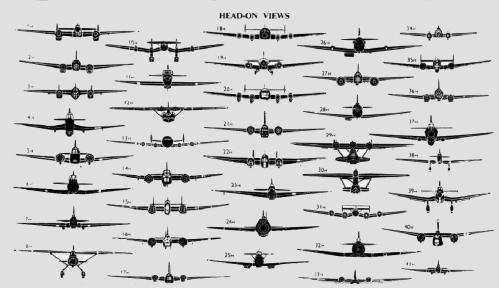 Early
accurate identification of aircraft was difficult as the 'Second Grade' test
page below of German, Italian, British and USA aircraft, demonstrates. Add other elevations for each aircraft into the mix and
the complexity of the task for inexperienced observers becomes clear. Early
accurate identification of aircraft was difficult as the 'Second Grade' test
page below of German, Italian, British and USA aircraft, demonstrates. Add other elevations for each aircraft into the mix and
the complexity of the task for inexperienced observers becomes clear.
[The complexity of accurate identification by
untrained observers, under battle conditions, can be imagined from this single
sheet of head-on views].
The Formative Years
In
the pre-radar days of 1925, the Observer Corps was formed to record and report on the movement of aircraft over the counties of
Kent and Sussex in the south east of England. Improbably to us now, the perceived threat was from the French Air Force! The
Corps was
administered by the Home Office as a civilian, uniformed organisation, whose
members were originally enlisted as special constables. On 1 Jan, 1929, the
administration of the Observer Corps was moved to the Air Ministry, while maintaining
its status as a civilian uniformed body. From these humble beginnings, the
Observer Corps eventually covered the entire country, with a total establishment
of around 27,000 people. The majority were part-time civilian volunteers in RAF blue uniforms, Army black
berets and Royal Navy armbands!
 Before
their involvement in D-Day, the ROC
gained a wealth of experience in the Battle of Britain. Most histories
opine that
the radar system, set up before and during the first years of WW2, gave
the UK a major advantage over the Luftwaffe... and, to
an extent, that is true but it's not the
complete story. The initial radar systems only provided early warning of
high-level raids, leaving the country vulnerable to low level attacks and,
in any event, it could not track aircraft movements across
the whole country. Before
their involvement in D-Day, the ROC
gained a wealth of experience in the Battle of Britain. Most histories
opine that
the radar system, set up before and during the first years of WW2, gave
the UK a major advantage over the Luftwaffe... and, to
an extent, that is true but it's not the
complete story. The initial radar systems only provided early warning of
high-level raids, leaving the country vulnerable to low level attacks and,
in any event, it could not track aircraft movements across
the whole country.
Later, as radar was
developed, the combination of a command and control system and the
Observer Corps allowed the RAF to make better use of their resources. For
example; 1) they reduced or eliminated the need for combat patrols, since
aircraft were vectored over land using ROC reports, 2) pilots, who bailed
out, were recovered and returned to duty much
earlier than before and 3) aircraft losses were reduced by the use of flare
beacons on high ground to guide returning aircraft to air fields or
landing strips, when radio communications with them were lost. The combined advanced warning by radar and tracking by the
Observer Corps produced what would now be termed a ‘force multiplier’.
The designation "Royal"
was bestowed on the Observer Corps on February 15, 1941, in acknowledgement of its
expertise in aircraft recognition by its major client, the RAF.
Only with the arrival of the advanced AWACS
system between the late 1980s and early 1990s, did the UK have the
means to successfully track low-level flights across the
UK land mass.
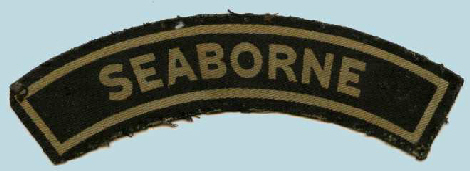 Seaborne ROC Seaborne ROC
Experience of the Allied invasions of North Africa, Sicily and the Italian mainland
showed significant losses of Allied aircraft to armed
Allied merchant ships. Such losses to 'friendly fire' in the forthcoming Normandy
landings were to be reduced or eliminated with the assistance of the ROC. It was Air-Commander-in-Chief, Allied Expeditionary Air Force,
Air Chief Marshal Leigh-Mallory, who first proposed that around 2000 experienced
ROC personnel be redeployed as aircraft spotters on
defensively equipped merchant ships (DEMS).
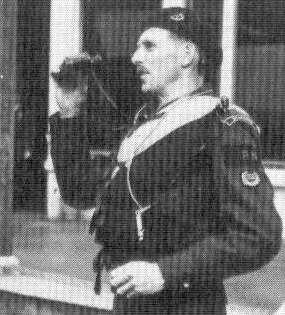 The
request was considered at a conference held on 5 April, 1944, comprising senior staff from the Air Ministry (the
Government
department, which administered the ROC at the time), the Admiralty, Headquarters
ROC, Supreme Headquarters Allied Expeditionary Force and the Allied
Expeditionary Air Force. The ROC would supply 240 men for 30
British Landing Ships Infantry (LSI) and 90
Motor Transport Ships, with a further 300+ for similar
USA vessels. To cover the legal and administrative problems arising from the use
of civilians in the naval and merchant marine, the ROC personnel were to enlist
for one month as volunteers in the Royal
Navy with the rank of Petty Officer, with an option to serve a second month if required. The
request was considered at a conference held on 5 April, 1944, comprising senior staff from the Air Ministry (the
Government
department, which administered the ROC at the time), the Admiralty, Headquarters
ROC, Supreme Headquarters Allied Expeditionary Force and the Allied
Expeditionary Air Force. The ROC would supply 240 men for 30
British Landing Ships Infantry (LSI) and 90
Motor Transport Ships, with a further 300+ for similar
USA vessels. To cover the legal and administrative problems arising from the use
of civilians in the naval and merchant marine, the ROC personnel were to enlist
for one month as volunteers in the Royal
Navy with the rank of Petty Officer, with an option to serve a second month if required.
Personnel
were to continue to wear their ROC uniforms with the addition of a navy-blue
brassard bearing the letters "RN" and a shoulder badge bearing the word
‘Seaborne’. They were to be paid a special rate of one pound a day. This created
the unique spectacle of civilians in RAF blue uniforms, with Army black berets,
serving as Royal Navy Senior NCOs! If captured by the enemy, this extraordinary arrangement would have been
very hard to explain!
 Recruitment and Training Recruitment and Training
The
RAF officer commanding the ROC issued a personal letter to all ROC
members;
"The supreme commander has asked me to provide a considerable number of ROC
observers to serve aboard ship for recognition duties during forthcoming
operations. The highest importance is attached to this request, for the
inefficient and faulty recognition has contributed largely to enemy successes
against our shipping and to losses of aircraft from friendly fire."
1376
observers initially responded together with 29 officers but, 4 or 5 weeks later,
around 1094 actually participated in the selection process.
The recruitment panel
comprised full time officers from the Royal Navy, ROC and RAF and was held at
the Royal Bath Hotel, Bournemouth. After medicals and very tough trade tests,
290 were returned to normal duties, the remaining 796 were enrolled in the Royal
Navy within the terms described
earlier.
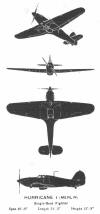 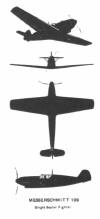 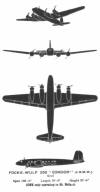 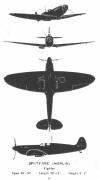 They were an eclectic
group taken from all walks
of life and ages. At one extreme, Ian Ramsbottom, aged 17 was a winner of the
‘Spitfire’ master observer badge and at the other, there were 70 year old
veterans from WW1. The successful volunteers underwent additional intensive
aircraft recognition training, together with basic training in naval procedures. They were an eclectic
group taken from all walks
of life and ages. At one extreme, Ian Ramsbottom, aged 17 was a winner of the
‘Spitfire’ master observer badge and at the other, there were 70 year old
veterans from WW1. The successful volunteers underwent additional intensive
aircraft recognition training, together with basic training in naval procedures.
[These images, right, will enlarge until
identification details are easily read].
Part of the recognition training was a test based on a film. Amazingly, a volunteer from a remote location in the Scottish Highlands admitted it was the
first movie he'd ever seen! Another training element used identification cards,
similar to those above.
By the fifteenth of May, 1944, the first Observers
had been drafted to their ships. This was just forty days after the initial
meeting and sixteen after the setting up of the depot in Bath.
D-Day
In common with all Allied forces personnel
preparing for the D-Day landings, the ROC volunteers endured a period of
inactivity, as the planners considered the weather and other operating
conditions before launching the big offensive. This was alleviated to some
extent by
a review of the fleet along the south coast of England by King George.... at least it gave the men an excuse to polish and clean!
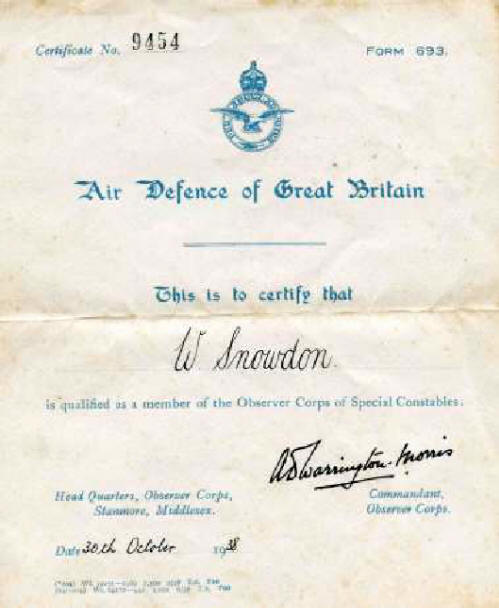 For the first 500 Observers posted by 5 June,
1944, all plans and preparations came to a climax with the issue of an order
from General Eisenhower, Supreme Commander Allied Powers Europe, to start the
Allied invasion of France on June 6, 1944. For the first 500 Observers posted by 5 June,
1944, all plans and preparations came to a climax with the issue of an order
from General Eisenhower, Supreme Commander Allied Powers Europe, to start the
Allied invasion of France on June 6, 1944.
The
heroic efforts of the mainstream military services involved in this historical action
have, deservedly, been told and retold many times. However, the vital supporting roles of the merchant
marine, the ROC and other groups, such as dock and railway
employees, failed to capture the public imagination in the same way. However,
it's a fundamental truth that each contributed towards the victory that would
come the following year.
[Certificate, left, is from the Phil Scott
collection, Dorset].
In the weeks and months following D Day,
the advancing allied forces were supplied by thousands of vessels and craft of
all sizes and uses. They faced danger from enemy mines, fast E boats, shore batteries
and aircraft, as
well as the storms and other natural hazards in the channel and its approaches.
The
Air Ministry and ROC Headquarters received messages of gratitude from ships'
Captains and naval and air commanders on land and sea. They were unanimous in
their praise of the work of the ROC. Included were the personal congratulations
from Admiral Ramsey, Allied Commander-in-Chief Naval Forces.
This signal was received from Lieutenant Lyon,
commanding US Naval armed guard aboard the SS John A. Sutter:
"Subject named men" (Observers W.
E. Hills, and J. F.
Rolski) " formerly members
of your command and now serving as aircraft identifiers on our ship, Merchant
Transport 22, attached to my US Naval gun crew, have already proved their weight
in gold to us in properly and quickly identifying all aircraft we have
encountered in our initial invasion trip.
As an example, on the morning of June 10th, with visibility poor,
they caused us to hold fire on two RAF Spitfires, which all other ships, except
naval units, were firing at for a period of half an hour.
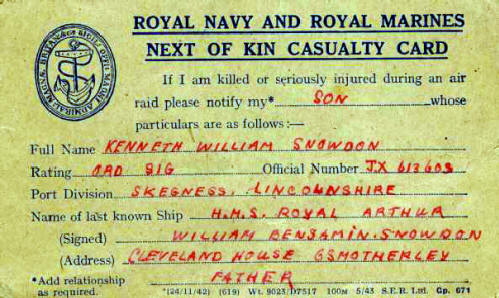 When
they reported aboard, they told me they could identify anything, which they could
see. Such has proved to be the case and I find myself, along
with my men, relying on them for services far in excess of any other personnel
in the crew. It is a pleasure to have them with us and a great
satisfaction to have men so carefully trained to do a job, which is so important
for the safety of our troops and cargo." When
they reported aboard, they told me they could identify anything, which they could
see. Such has proved to be the case and I find myself, along
with my men, relying on them for services far in excess of any other personnel
in the crew. It is a pleasure to have them with us and a great
satisfaction to have men so carefully trained to do a job, which is so important
for the safety of our troops and cargo."
From Wing Commander P.
B. Lucas, Air
Staff Air Defence of Great Britain:
"The general impression amongst the Spitfire wings covering our land and
naval forces over and off the beach-head appears to be that, in the majority of
cases, the fire has come from naval warships and not from merchant ships. Indeed
I personally have yet to hear a pilot report that a merchant vessel had opened
fire on him"
After two and a half months of stalwart service, the ‘Seaborne’ scheme was ended.
Two ROC men were killed, one was injured by
shell splinters and one by a V1 flying bomb, which hit his vessel while in port. Twenty-two survived
when their ships were sunk. ‘Petty Officer’, Ian Ramsbottom, who must have been the youngest
‘Senior NCO’ in the Royal Navy for those two months, returned safely back to
school!
The
final word came from Air Chief Marshal Leigh-Mallory. He requested that the following
message be circulated to all ROC
personnel:
"I have read reports from both pilots and naval officers regarding the
Seaborne volunteers on board merchant vessels during recent operations. All
reports agree that the Seaborne volunteers have more than fulfilled their
duties and have undoubtedly saved many of our aircraft from being engaged by
ships' guns. I should be grateful if you would please convey to all ranks of the
Royal Observer Corps and, in particular, to the Seaborne observers themselves,
how
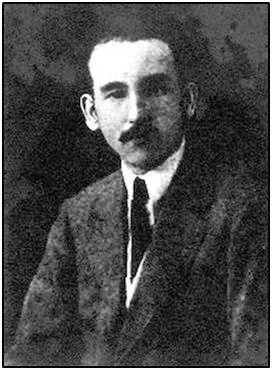 grateful I and all pilots in the Allied Expeditionary Air Force are for
their assistance, which has contributed in no small measure to the safety of our
own aircraft and also to the efficient protection of the ships at sea. grateful I and all pilots in the Allied Expeditionary Air Force are for
their assistance, which has contributed in no small measure to the safety of our
own aircraft and also to the efficient protection of the ships at sea.
The Work of the Royal Observer
Corps is quite often unjustly overlooked and
receives little recognition and I, therefore, wish that the service they rendered
on this occasion be as widely advertised as possible and all Units of the Air
Defence of Great Britain are therefore to be informed of the success of this
latest venture of the Royal Observer Corps."
Royal Observer Corps Seaborne Roll of Honour
Killed in action:
[Photo right; Royal Observer Corps
Seaborne Volunteer, Chief Observer, Petty Officer, John B Bancroft.
Service No P/JS 2639. Killed on 24/06/44, when MV Derry Cunily was sunk by an
acoustic mine. Based at HMS President III].
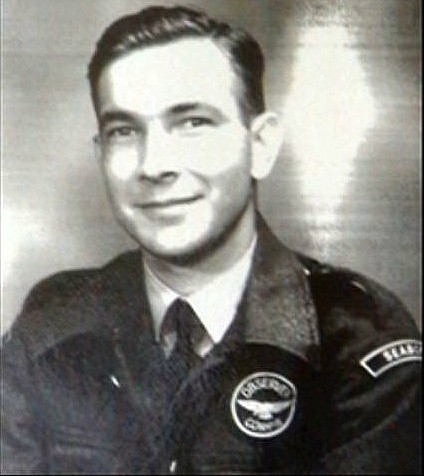 [Photo
left; Royal Observer Corps
Seaborne Volunteer, Observer, Petty Officer,
William John (Bill) Salter. Service No P/JS 2903. Killed on 21/07/44, when
Steam Ship Empire Broadsword was sunk by a mine. Based at HMS President III]. [Photo
left; Royal Observer Corps
Seaborne Volunteer, Observer, Petty Officer,
William John (Bill) Salter. Service No P/JS 2903. Killed on 21/07/44, when
Steam Ship Empire Broadsword was sunk by a mine. Based at HMS President III].
Both are remembered on the Portsmouth Naval Memorial on panel 87 col 2.
Injured in action:
Observer Percy Heading (Steam Ship Sambut sunk by shellfire).
Mentioned in despatches:
Observer Lieutenant George Alfred Donovan Bourne; Leading Observer Joseph Douglas Whitham; Observer Thomas Henry Bodhill; Observer John Hughes; Observer Derek Norman James; Observer Edward Jones; Observer Albert Edward Llewellyn; Observer George McAllan;
Observer Anthony
William
Priestly; Observer John Weston Reynolds... and all the remainder of the 796
courageous volunteers!
Further Reading
There are around 300 books listed on
our 'Combined Operations Books' page. They, or any
other books you know about, can be purchased on-line from the
Advanced Book Exchange (ABE). Their search banner link, on our 'Books' page, checks the shelves of
thousands of book shops world-wide. Just type in, or copy and paste th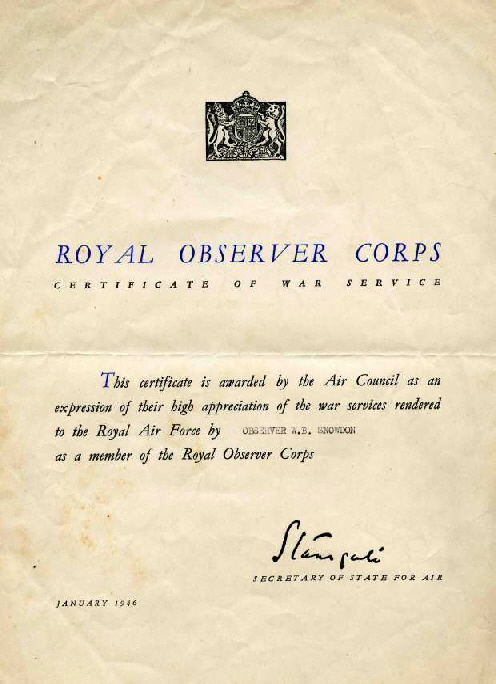 e
title of your choice, or use the 'keyword' box for book suggestions.
There's no obligation to buy, no registration and no passwords. e
title of your choice, or use the 'keyword' box for book suggestions.
There's no obligation to buy, no registration and no passwords.
The following works were used extensively to produce this paper:
Forewarned is Forearmed – An Official Tribute and History of the ROC
by Henry Buckton, Publisher: Ashford, Buchan & Enright 1993. ISBN 1 –
85253-292-0.
Attack Warning Red – The ROC and the Defence of Britain 1925 to 1975]
by Derek Wood. Publisher: Macdonald and Jane’s 1976. ISBN 0356 08411 6.
Further information and links to ROC exhibits can be found on the web sites
of the following organisations:
Subterranean Britannica:
Copy & Paste http://www.subbrit.org.uk/rsg/index.shtml
Radar Developments in WW2
- Information on Identification
Friend or Foe (IFF) + Technical Data. Copy & Paste;
https://www.qsl.net/vk2dym/radio/iff.htm
[Certificate right is from the Phil Scott
collection, Dorset].
Correspondence
Dear Sir,
I am a 'Friend' of Fort Pannerden which is near the German
border in Holland where the Rhine enters Holland and splits forming the river Waal and the Pannerdens Kanaal. Fort Pannerden was constructed around 1870 and
has been recently renovated. During the early years of the "cold war" an
observation post was positioned on top of the fort. (Photo opposite). It was
manned by the Korps Luchtwacht Dienst from 1950 to 1964 when their primary task
was to observe the movement of Russian aircraft over the area.
 Ideally we would like to reinstate an identical apparatus
which bears the trade name NEHOME and to find out more about it. Failing this we
would look at the possibility of making a working copy. Ideally we would like to reinstate an identical apparatus
which bears the trade name NEHOME and to find out more about it. Failing this we
would look at the possibility of making a working copy.
I will be very grateful to hear from anyone with information that might help us
achieve our goal. Just click on the e-mail icon opposite.
 With
kind regards, With
kind regards,
Johan Kip
Acknowledgments
Contributed by Christopher Michael Hayes, former member of
the No 6 Group (Norwich) Royal Observer Corps.
|




 Seaborne ROC
Seaborne ROC








 grateful I and all pilots in the Allied Expeditionary Air Force are for
their assistance, which has contributed in no small measure to the safety of our
own aircraft and also to the efficient protection of the ships at sea.
grateful I and all pilots in the Allied Expeditionary Air Force are for
their assistance, which has contributed in no small measure to the safety of our
own aircraft and also to the efficient protection of the ships at sea. [Photo
left; Royal Observer Corps
Seaborne Volunteer, Observer, Petty Officer,
William John (Bill) Salter. Service No P/JS 2903. Killed on 21/07/44, when
Steam Ship Empire Broadsword was sunk by a mine. Based at HMS President III].
[Photo
left; Royal Observer Corps
Seaborne Volunteer, Observer, Petty Officer,
William John (Bill) Salter. Service No P/JS 2903. Killed on 21/07/44, when
Steam Ship Empire Broadsword was sunk by a mine. Based at HMS President III].
 Ideally we would like to reinstate an identical apparatus
which bears the trade name NEHOME and to find out more about it. Failing this we
would look at the possibility of making a working copy.
Ideally we would like to reinstate an identical apparatus
which bears the trade name NEHOME and to find out more about it. Failing this we
would look at the possibility of making a working copy.
